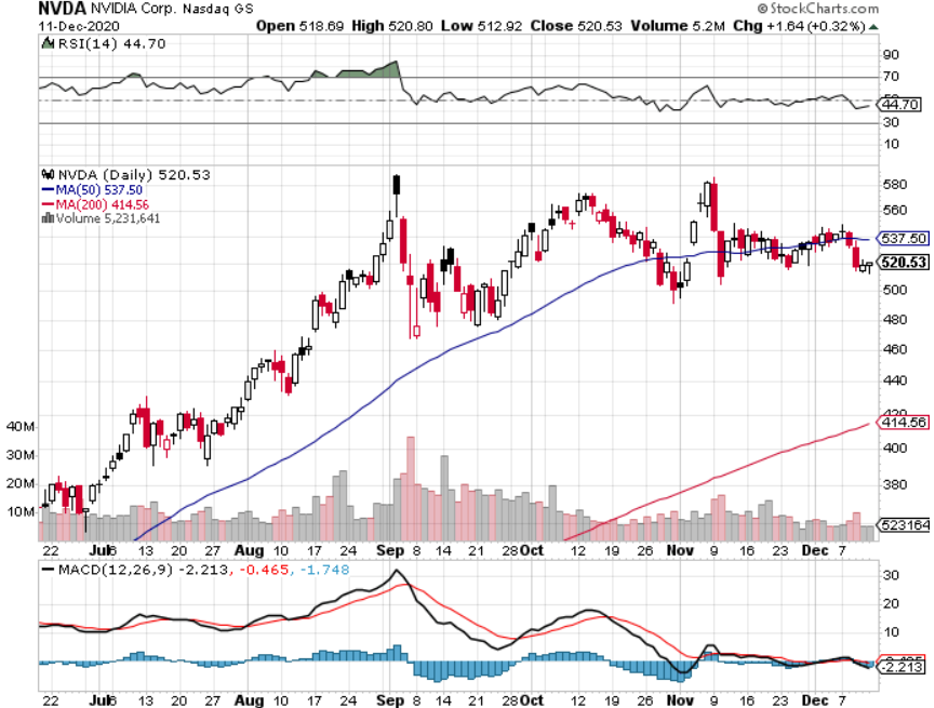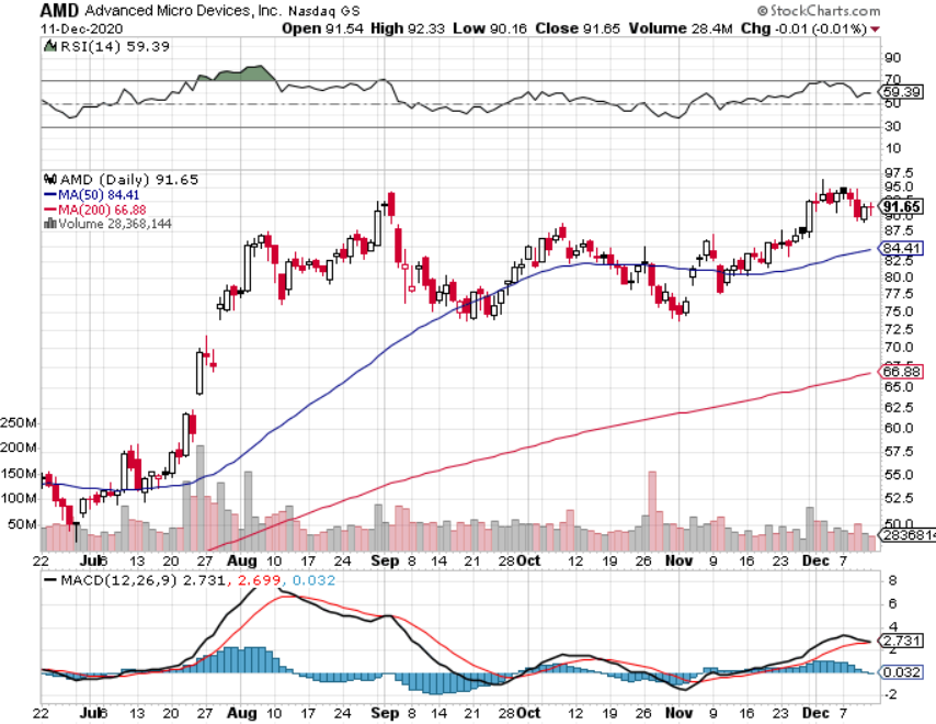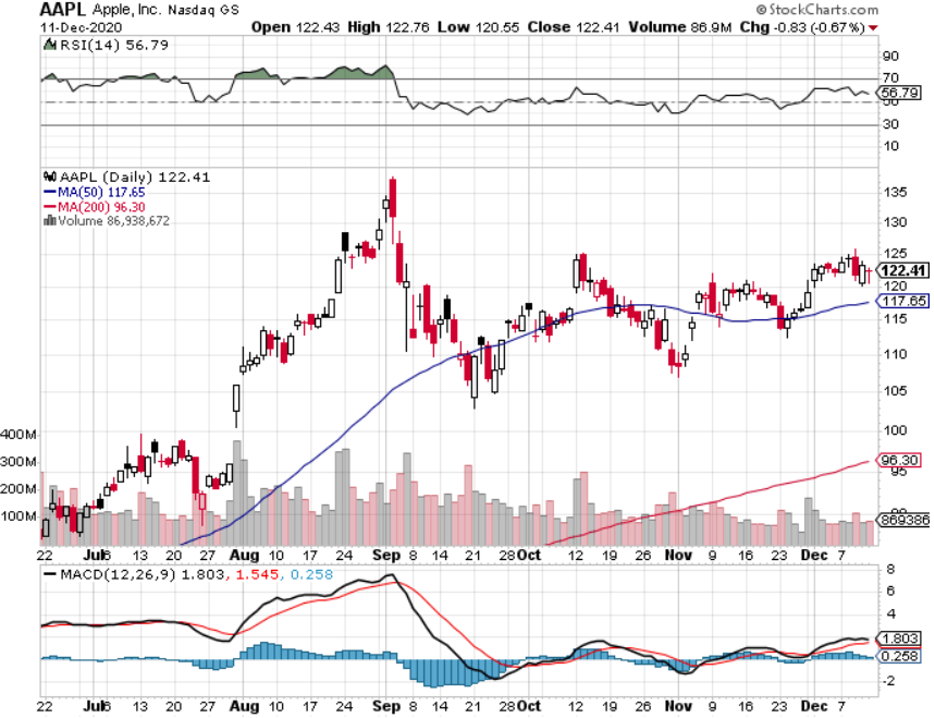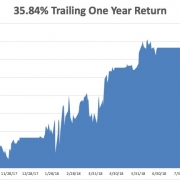One of the best buy and hold tech stock has to be Nvidia (NVDA).
They are positioned at the vanguard of every major cutting-edge technology in the world such as self-driving technology, data center, and artificial intelligence.
Their cash cow business of manufacturing GPUs (graphics processing unit) which are essential to video gaming has been bolstered by the shelter-at-home movement.
Video games as an activity or something to just pass the time has never been so popular and Nvidia is the best of breed in this department.
The key takeaway from Nvidia’s asset portfolio is the diversity.
They aren’t beholden to any one division and I wouldn’t bet anytime soon that video games are going to go out of fashion because of the generational tailwind occurring.
In fact, the underlying Nvidia stock has risen more than 120% in 2020 and semiconductors have proven to be an astute place to put your money in during the pandemic.
The same goes for competitive rivals such as Advanced Micro Devices (AMD), Intel (INTC), and Qualcomm (QCOM) who explore some of those same markets.
Nvidia counts Amazon (AMZN) Web Services as a customer for data-center chips. It is partnering with VMware (VMW) and Amazon on an AI-driven cloud platform for big businesses.
Be mindful that semiconductor stocks are volatile because of the boom-bust nature of their business cycle.
Global chip sales cratered in late 2018 and fell 12% in 2019.
They rallied early this year on signs of an industry recovery and on a U.S.-China trade deal, then sold off on coronavirus fears.
The trade war has also thrown a spanner in the works of global chip production.
Production was first halted in China and then put global economies under strain.
Despite the pandemic, the semiconductor industry will return to growth in 2020.
Chip sales will rise by 5.1% to $433 billion this year and accelerate to 8.4% in 2021.
The spread of 5G wireless networks is a key catalyst.
Moving forward, it’s highly likely that U.S. lawmakers maintain an anti-China doctrine, and Nvidia and AMD derive only 1% to 2% of revenue from Huawei.
In fact, other companies are more exposed like Cisco and Intel.
How well is Nvidia doing?
They increased revenue by 57% year over year in the third quarter predominately due to its data center business, which grew revenue by 162% over the same period.
In Q3, the data center division accounted for $1.9 billion of the company's $4.7 billion of revenue.
Nvidia is also growing through acquisitions with its blockbuster pending $40 billion acquisition of chip design licensor ARM Holdings from Softbank (OTC:SFTBF).
ARM’s acquisition will help NVIDIA maintain the best of breed quality through 2021 and beyond.
That is important because the semiconductor industry is becoming more cutthroat with many big players sourcing chips in-house after deeply investing in this technology.
Apple (AAPL) recently unveiled its own stable of Mac processors, the M1, making its debut in late 2020. Manufacturing chips is historically a capital-intensive activity, and new chips don’t roll out that fast. In any case, cash-rich companies the size of Google and Apple have the firepower to pull this off.
ARM holds many unique patents forcing many companies to license from them, Apple can customize those designs, and the actual fabrication is outsourced to Taiwan Semiconductor (TSM), the largest and most technologically advanced semiconductor fabricator in the world.
In this specific case, Intel is the direct loser from the production of Apple M1 chips and at this point, this is becoming an existential crisis for Intel.
The acquisition of ARM is a gamechanger, and not just because NVIDIA would gain access to new markets like CPUs for mobile as early as 2021.
Integrating with ARM signals NVIDIA's future shift toward licensing of technology - a far more stable business model than the traditionally cyclical nature of semiconductor industry sales driven by upgrade cycles.
It all comes down to the quality of NVIDIA's chips which remain highly competitive in secular growth areas of tech, such as data centers and artificial intelligence. This alone should keep NVIDIA high up investors' list for years to come.
Demand for the new Nvidia GeForce RTX GPU has been “overwhelming” and the company completed its Mellanox acquisition, a tech firm that sells adapters, switches, software, cables, and silicon for markets including high-performance computing, data centers, cloud computing, computer data storage, and financial services, in April, helping it to double down on their revenue drivers.
Sales for Nvidia's chips remain robust across some of the most desirable end markets and there is nothing meaningful out there to suggest that Nvidia won’t continue its overperformance next year even if the shelter-at-home economy stops.
I am highly bullish on Nvidia stock into 2021 and beyond.






